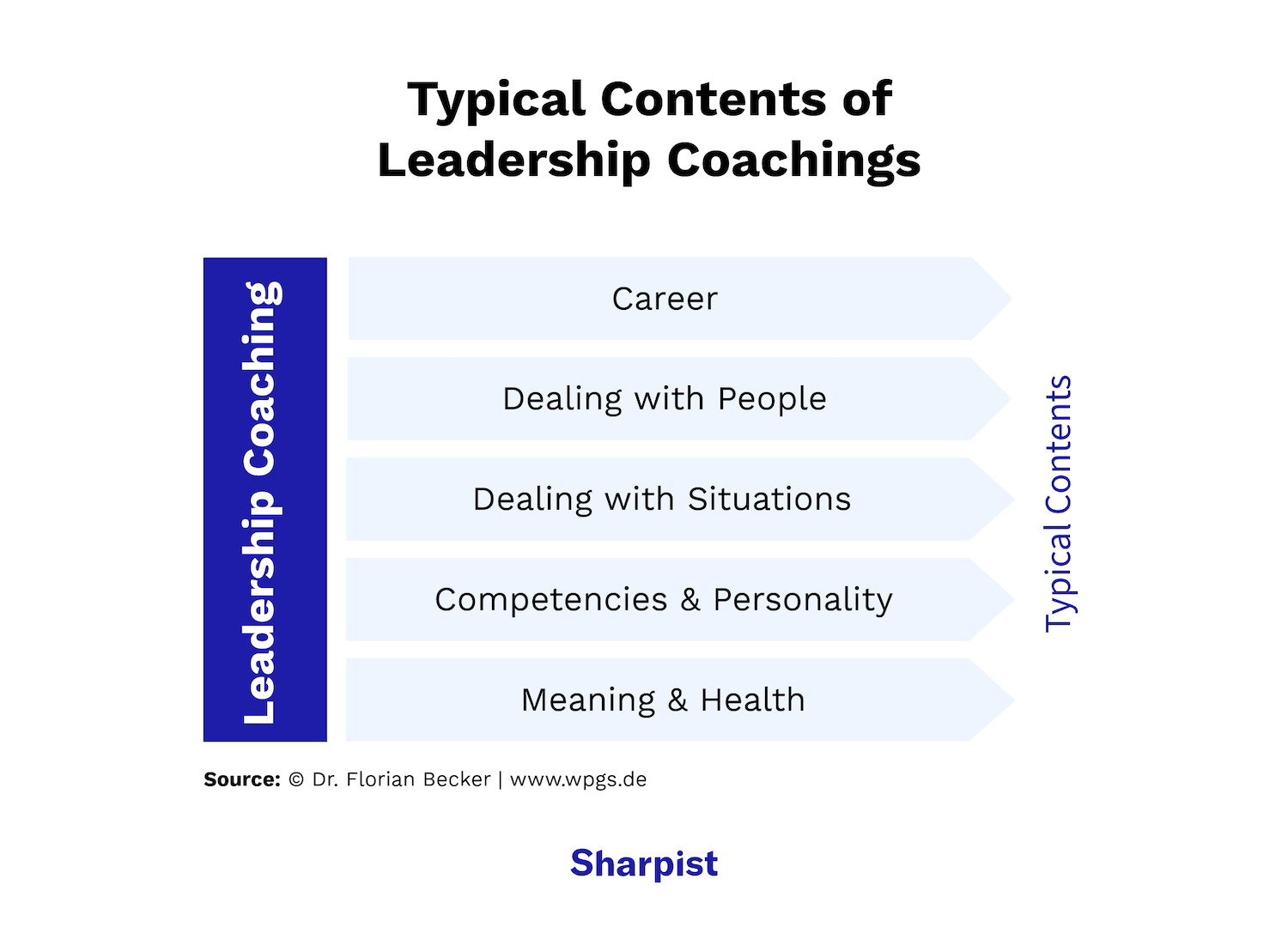The Topic In A Nutshell
Why Is Executive Coaching Important For A Company?
Poor leadership is one of the most expensive hidden cost factors in companies—and one of the biggest challenges for HR departments. When managers are unable to motivate their teams, millions are lost due to declining productivity, higher turnover, and recruitment costs. A departing manager costs on average 1.5 to 3 times their annual salary due to knowledge loss and replacement costs – costs that you, as an HR manager, have to justify to the CFO.
Leadership requirements have changed dramatically. Modern leaders navigate hybrid teams, lead without direct hierarchical authority, and manage constant change. These new challenges require skills that are not taught in traditional management training programs. At the same time, younger employees expect different leadership styles and more development opportunities, while stakeholders have increasingly high expectations of leadership quality—a challenge that HR teams must systematically address with scalable coaching solutions.
Digital coaching thus offers HR teams a measurable tool for systematic leadership development that goes far beyond traditional seminars.

Companies with a strong leadership culture outperform their competitors in terms of profitability, innovation, and employee retention. Investing in leadership development thus becomes a strategic competitive advantage.
Classic Content Of Executive Coaching
Executive coaching covers four key areas of development, which vary depending on the management level and individual challenges. At Sharpist, HR teams can scale customized development paths for their entire management organization based on this foundation.
Executive Coaching As The Basis For Career And Strategy
Managers develop clear career prospects and learn how to strategically expand their role. Coaching provides support for promotions, role changes, and the development of personal leadership goals. Typical topics in executive coaching include positioning within the company and building strategic networks. At the same time, you pursue the goal of preparing employees for the next level of management in order to make optimal use of the potential of the leadership skills they have developed.
Leadership Responsibility Means Dealing With People And Teams
The core competence of successful employee management lies in interpersonal skills: employee motivation, conflict resolution, empathetic communication, and emotional intelligence are at the heart of this focus area. These soft skills are measurable: companies that provide systematic coaching in this area see up to 30 % less turnover and significantly higher engagement scores.

Managers learn practical techniques for difficult conversations, team dynamics, and building trusting working relationships. They learn to give constructive feedback, conduct performance reviews, manage stress effectively, build resilience, and demonstrate composure even in stressful moments.
Personal Skills And Personal Development
Self-reflection and the development of an authentic leadership style are the focus of this development area. Managers recognize their strengths, overcome limiting beliefs, and systematically develop their leadership personality. This focus area has been proven to contribute to an increase in leadership competence.
Dealing With Specific Situations
Practical solutions for everyday challenges are another focus. These include:
Managers develop situational skills and learn to act professionally even under pressure. At Sharpist, the combination of 1:1 coaching sessions and practical microtasks enables HR teams to embed these critical leadership skills scalably throughout the organization, with a measurable impact on change success rates and crisis resilience.
Methods In Executive Coaching
Professional executive coaches use various proven methods to promote the sustainable development of leadership skills. Choosing the right coaching method depends on the individual situation, goals, and personality of the respective executive.

Questions As A Core Method
In executive coaching, specific questioning techniques are used to encourage self-reflection and open up new perspectives for the further development of leadership skills. With open-ended questions, coaches systematically focus on solutions rather than problems. The Socratic method encourages executives to develop their own answers instead of receiving ready-made advice—this has been proven to increase the likelihood of implementation and the sustainability of development.
Typical areas of inquiry include:
This systematic questioning technique distinguishes professional coaching from traditional consulting and makes the development process for your managers self-effective and sustainable.

Systemic Approach
Constellation work with figures or digital visualizations help to shed light on complex organizational structures and reveal relationship dynamics. Managers can spatially represent team constellations, stakeholder relationships, or competitive situations and thereby gain new insights.
The systemic approach views the organization as a living system with hidden interactions. This method reveals not only the official hierarchy, but also informal centers of power, communication channels, and emotional connections. It is particularly valuable in change processes, reorganizations, or conflict resolution in matrix structures—typical challenges in decentralized organizations.
GROW Method
The structured GROW approach systematically guides you through four phases:
This proven method creates clarity, leads from problem analysis to concrete action, and enables measurable interim results.
Associative Methods
Creative techniques such as image work, metaphors, or visualization exercises tap into unconscious resources and promote innovative solutions that go beyond purely rational considerations. These methods are particularly effective when managers are stuck in familiar patterns of thinking and need new perspectives—for example, when strategically realigning or developing an authentic leadership style.
Consciously switching between analytical and creative thinking significantly broadens the range of possible solutions and enables breakthroughs where purely rational approaches reach their limits.
Executive Coaching As A Success Factor
The quality of the coach is a decisive factor in the success of coaching. Since the job title "coach" is not protected, companies should set rigorous quality standards. Professional certifications such as ICF (International Coaching Federation) or DBVC (German Coaching Association) ensure that coaches have sound training and regular continuing education.
The key to success is finding the right coach match. In addition to professional qualifications, industry experience, management level, and personal working style must be a good fit for the coaching manager. Studies show that with an optimal match, measurable progress is visible within the first few weeks, while a poor match often leads to premature program termination.
The continuous quality assurance and further development of our business coaching sets Sharpist apart from superficial coaching programs. Regular feedback, supervision of coaches, and performance measurement ensure sustainable development.

Executive Coaching With Sharpist: Measurable Development For Your Company
Sharpist is revolutionizing leadership development through a unique combination of 1:1 video coaching, microtasks, and continuous progress tracking. This holistic approach differs fundamentally from conventional offerings, which often rely solely on isolated sessions and thus have less impact on leadership style or communication.
Our flexible credit model allows you to allocate resources according to your needs at fair prices. Instead of rigid flat-rate subscriptions, HR teams can dynamically reallocate credits from less active to more engaged users to achieve business goals more efficiently and develop your employees into outstanding leaders.
With a 99 % satisfaction rate for coaching sessions and a 97% matching success rate on the first attempt, Sharpist is setting new standards in digital leadership development – measurable, scalable, and proven to be effective for organizations of all sizes.
FAQ
How quickly do results become apparent in executive coaching?
Initial behavioral changes are already apparent after 2–3 sessions, with measurable improvements after 3–6 months. Sharpist continuously documents progress across 32 focus areas and achieves genuine development in leadership skills in the first quarter: 80% of participants achieve an average improvement in leadership skills of 12%.
The combination of regular coaching sessions and over 2,000 microtasks between appointments significantly accelerates the learning process and makes development visible in everyday work.
How do I communicate executive coaching to skeptical managers?
Position coaching as a strategic investment rather than personal development. Successful communication strategies focus on business impact, benchmarking with industry leaders such as Porsche and LVMH, and freedom of choice in coach matching. Avoid deficit language—instead, emphasize growth potential and competitive advantages. Use concrete ROI figures: Every dollar invested in leadership development generates an average return of $5.70 through higher productivity and employee retention.
How do I find the right coaching provider?
Look for ICF/DBVC certification, proven success stories, and AI-based coach matching. Sharpist achieves a 97% matching success rate on the first attempt. Important criteria: References from large companies, platform scalability, free coach changes, and transparent ROI measurement through continuous tracking. Also check the flexibility of the pricing model—rigid subscriptions often lead to unused resources, while credit systems allow for needs-based distribution.
How long does typical coaching for executives last?
Successful coaching programs typically last 3–6 months with 6–12 sessions. Sharpist recommends a structured approach: After a kick-off phase with goal setting, regular sessions follow every two weeks, supplemented by continuous microtasks. The minimum duration is three months for measurable results, after which monthly cancellation is possible. Many companies extend to 12 months for sustainable cultural change due to the positive results.
Is online business coaching as effective as in-person coaching?
Studies show that digital coaching is at least as effective as on-site sessions. Advantages: Greater flexibility, no travel time, no need for expensive premises, easier scheduling, and better scalability. Sharpist achieves a 99% satisfaction rate for video sessions thanks to professional platform technology and specially trained online coaches. The combination of personal video calls and asynchronous microtasks even maximizes learning efficiency by over 20% compared to traditional approaches.





.png)




.svg)



%20(1).png)


